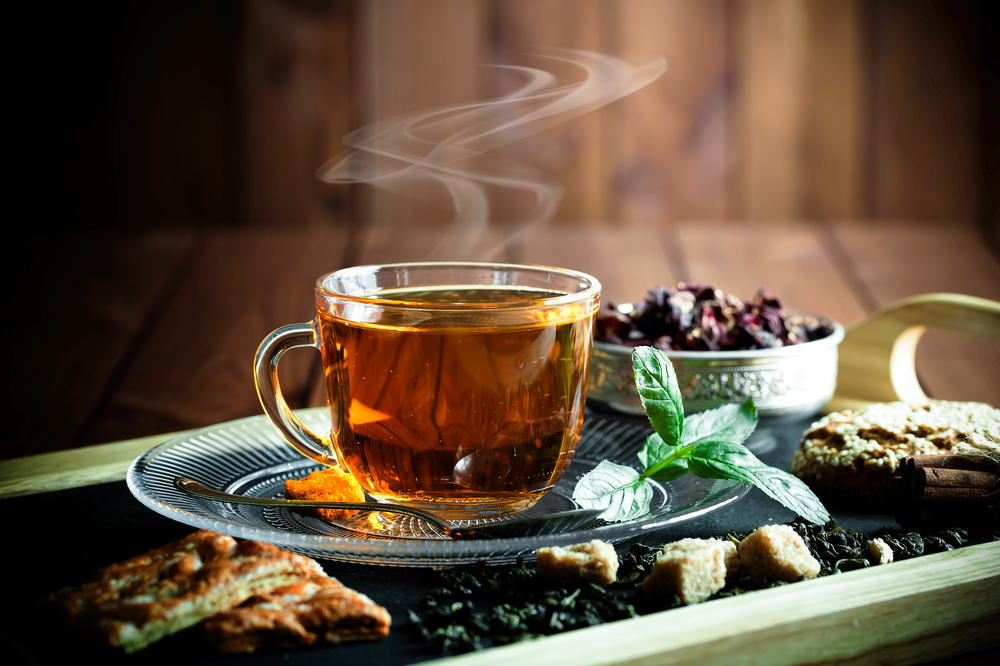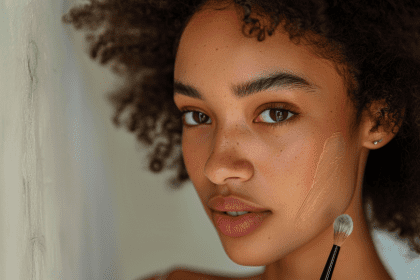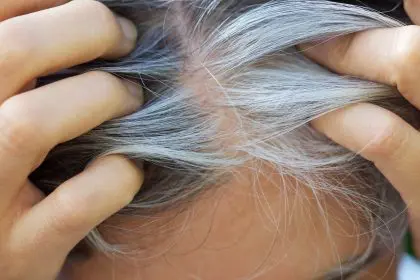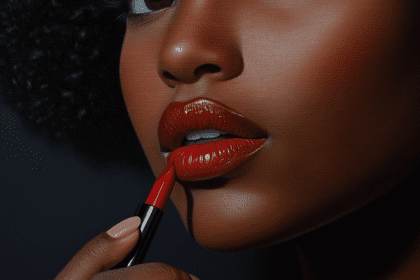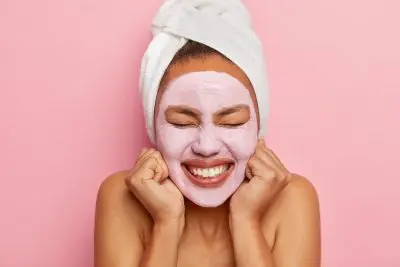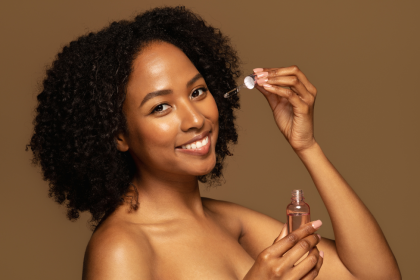That soothing cup of chamomile might be doing more than just calming your nerves—it could be transforming your skin in ways you never expected. The relationship between herbal teas and skin health goes far deeper than general hydration, with fascinating connections to your specific skin tone and genetics that most beauty experts never mention.
Different skin tones have unique biological responses to certain plant compounds found in herbal teas. These responses involve everything from melanin production to inflammation pathways and even DNA repair mechanisms. Understanding these connections can help you choose teas that work harmoniously with your natural skin biology rather than fighting against it.
Let’s explore why that steaming cup might be your skin’s best friend—or secret adversary—depending on your unique melanin makeup and genetic heritage.
The melanin-tea compound connection
Your skin’s melanin content—which determines your skin tone—directly influences how certain tea compounds affect your complexion. This relationship works through specific receptors on melanocytes, the cells responsible for producing the pigment that gives your skin its color.
Darker skin tones typically have more active melanocytes producing higher amounts of melanin. These highly active cells contain more receptors that can interact with certain tea polyphenols, particularly those found in rooibos, hibiscus, and certain chai blends. When these compounds bind to melanocyte receptors, they can help regulate melanin production, potentially reducing hyperpigmentation in darker skin tones.
Lighter skin tones, by contrast, often respond more noticeably to the antioxidant properties in green and white teas. With naturally lower melanin levels providing less intrinsic protection against UV damage, fair skin shows more visible improvements from teas that boost the skin’s antioxidant defenses.
This melanin-tea interaction helps explain why generic skincare advice often falls short. The herbal tea that transformed your friend’s complexion might do little for yours if you have significantly different melanin levels and receptor activity patterns.
Inflammation responses vary by skin tone
Inflammation lies at the root of many skin issues, from acne to premature aging, but how your skin manifests inflammation varies dramatically based on your skin tone. Herbal teas interact with these varying inflammatory responses in surprisingly specific ways.
Darker skin tones often experience post-inflammatory hyperpigmentation, where even minor inflammation leaves behind persistent dark spots. For these skin types, anti-inflammatory teas containing glycyrrhizin, like licorice root tea, can be particularly effective because this compound both calms inflammation and inhibits the enzyme that triggers melanin production in response to irritation.
Medium skin tones, particularly those with olive undertones, often display redness less visibly but experience more textural changes from inflammation. These skin types typically respond well to teas high in triterpenes, like calendula or ginger tea, which help normalize cell turnover disrupted by inflammatory processes.
Fair skin tones, which show redness and irritation most visibly, often benefit from teas high in flavonoids like chamomile and lavender, which strengthen capillary walls and reduce the visible redness that characterizes their inflammatory response.
Understanding these distinct inflammatory patterns allows you to select herbal teas that address your skin’s specific inflammatory language rather than fighting inflammation with a one-size-fits-all approach.
Genetic ancestry influences tea metabolism
The genetic heritage that contributed to your skin tone also shaped many other biological factors, including how your body processes various plant compounds. These metabolic differences can dramatically alter how herbal teas affect your skin from the inside out.
People with East Asian ancestry often possess genetic variants that process certain tea catechins more efficiently, particularly those found in green tea. This enhanced metabolism can lead to more pronounced skin benefits from lower doses of these teas compared to other genetic backgrounds.
Those with African ancestry frequently have genetic adaptations that enhance the bioavailability of certain flavonoids, like those found in rooibos and honeybush teas. These genetic factors allow the active compounds to reach the skin more effectively, potentially providing greater benefits for collagen maintenance and protection.
People with Northern European genetic backgrounds often metabolize bitter compounds differently, including those found in dandelion and burdock root teas. This metabolic pattern can make these detoxifying teas particularly effective for their skin by enhancing liver function that subsequently improves complexion clarity.
These metabolic differences help explain why family members with similar skin tones might still respond differently to the same herbal teas based on their specific genetic makeup. The most effective tea for your skin connects not just with your visible traits but with your invisible genetic heritage.
Skin barrier function and tea astringency
Your skin’s barrier function—its ability to retain moisture and protect against environmental damage—varies significantly with skin tone, directly affecting how astringent herbal teas influence your complexion.
Darker skin tones typically have a more robust skin barrier with tighter cellular adhesion and higher lipid content. This stronger barrier can benefit from moderately astringent teas like oolong or raspberry leaf, which help remove excess oil without compromising the skin’s natural protection.
Medium skin tones often have variable barrier function that changes significantly with environmental conditions. These skin types typically respond well to adaptogenic teas like holy basil or rhodiola, which help the skin adjust its barrier function based on current needs rather than permanently altering it.
Lighter skin tones frequently have a naturally thinner barrier that allows for greater transepidermal water loss. These skin types generally benefit from mucilage-rich teas like marshmallow root or slippery elm, which provide a temporary protective layer that supplements the skin’s natural barrier rather than using astringency that could further compromise it.
These barrier differences explain why applying the same tea topically as a toner or wash can produce dramatically different results depending on your skin tone. What creates a balanced, glowing appearance on one complexion might leave another feeling tight, dry, or irritated.
Photosensitivity patterns and protective teas
Your skin’s relationship with sunlight—determined largely by your melanin levels—creates specific photosensitivity patterns that certain herbal teas can either help or hinder, depending on your skin tone.
Darker skin tones have natural UV protection from higher melanin levels but can still experience oxidative stress from prolonged sun exposure. For these skin types, teas high in specific antioxidants like moringa or honeybush can enhance the skin’s natural resilience without altering its relationship with sunlight.
Medium skin tones often experience uneven melanin production with sun exposure, leading to patchy pigmentation. These skin types frequently benefit from teas containing uniform tyrosinase inhibitors, like white tea or pomegranate, which help regulate melanin production for more even results.
Lighter skin tones, with minimal natural sun protection, benefit most from teas containing photoprotective compounds. Carotenoid-rich teas like carrot seed or marigold can build internal photo-resistance, helping fair skin develop better solar tolerance without changing its fundamental nature.
Understanding these photosensitivity patterns is particularly important because some herbal teas—particularly those containing significant amounts of bergamot, St. John’s wort, or citrus oils—can actually increase photosensitivity. While potentially beneficial for very dark skin tones that need little extra protection, these photosensitizing teas can be problematic for lighter complexions.
Aging trajectories and tea antioxidants
Different skin tones age along distinct trajectories, with variations in how collagen breaks down, where wrinkles first appear, and how volume loss manifests. Herbal teas contain diverse antioxidant profiles that can be matched to these specific aging patterns.
Darker skin tones typically maintain collagen density longer but may experience more significant volume loss in the midface. These aging patterns respond particularly well to teas high in flavonols like elderberry or blackcurrant, which support the fat structures that maintain facial volume while providing general antioxidant protection.
Medium skin tones often experience both fine lines and pigmentation changes as primary aging concerns. For these complex aging patterns, teas with diverse polyphenol profiles like pu-erh or oolong can address multiple aging pathways simultaneously, supporting both collagen integrity and melanin regulation.
Lighter skin tones typically show earlier fine lines and loss of skin transparency. These aging indicators respond well to teas containing high levels of catechins and L-theanine, like white tea or certain green tea varieties, which protect existing collagen while supporting the skin’s natural repair mechanisms.
By matching tea antioxidant profiles to your skin’s specific aging biology rather than general “anti-aging” claims, you can address your unique aging trajectory instead of fighting someone else’s aging pattern.
Hormonal influences and adaptive teas
Hormonal fluctuations affect all skin, but different skin tones show distinct responses to these changes based on underlying receptor distributions and sensitivity patterns. Certain herbal teas can help modulate these hormonal influences in tone-specific ways.
Darker skin tones often experience more significant oil production changes with hormonal fluctuations, which can be balanced with adaptogenic teas like ashwagandha or holy basil that help normalize the skin’s response to hormonal signals rather than directly altering hormone levels.
Medium skin tones frequently show combination responses to hormonal changes, with both oiliness and dryness occurring in different facial regions. These complex patterns often respond well to harmonizing teas like dong quai or evening primrose, which help create balance across multiple skin responses.
Lighter skin tones typically display more visible inflammatory responses to hormonal fluctuations, with pronounced redness and sensitivity. These reactive patterns benefit from teas with both anti-inflammatory and gentle hormone-modulating properties, like red clover or chamomile.
Understanding your skin’s hormonal language allows you to select teas that work with your natural hormonal patterns rather than fighting against them, creating more sustainable improvements that flow with your body’s rhythms rather than temporarily masking hormonal effects.
Detoxification pathways and complexion clearing
Your liver and kidney function—which influence how effectively your body removes toxins that could affect your skin—have subtle variations based on genetic factors often correlated with skin tone. Certain herbal teas can support these specific detoxification pathways.
Those with darker skin tones often have genetic variations in Phase II liver detoxification that can be optimally supported with teas containing glucaric acid, like hibiscus or apple cider vinegar teas, which enhance specific conjugation pathways that help process and eliminate toxins affecting skin clarity.
Medium skin tones frequently benefit from balanced support across both Phase I and Phase II detoxification, making milk thistle or dandelion root teas particularly effective for these complexions by providing comprehensive liver support without creating detoxification imbalances.
Lighter skin tones sometimes have genetic variations that affect methylation pathways involved in detoxification. These metabolic patterns respond well to methyl-donor-rich teas like nettle or alfalfa, which provide the raw materials needed for efficient toxin processing through these specific pathways.
By supporting your body’s natural detoxification style rather than forcing a generic “detox” approach, these targeted teas help your skin achieve lasting clarity that works with your biological individuality rather than temporarily overriding it.
The art of matching herbal teas to your specific skin tone goes far beyond basic skincare categories like “dry” or “oily.” By understanding the deeper biological connections between your melanin patterns, genetic heritage, and how these factors influence your skin’s relationship with various plant compounds, you can craft a tea ritual that works in harmony with your unique biology, potentially transforming your complexion from the inside out.

